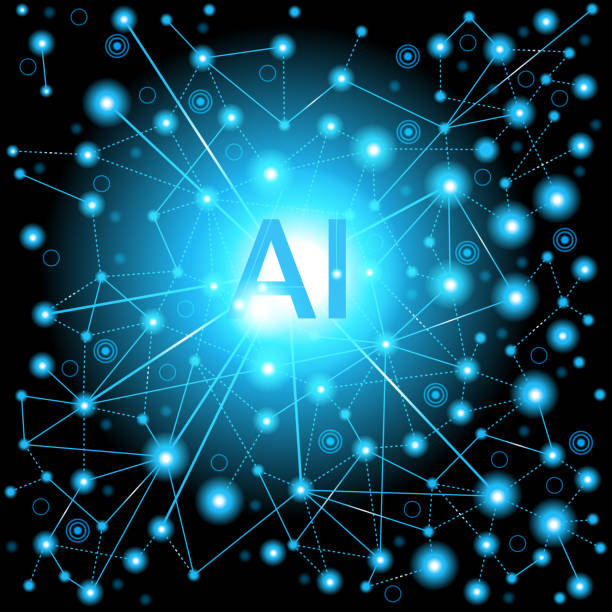To feel human is to be heard, understood, and treated with empathy. A chatbot that truly feels human tends to do several things right: it remembers what you said earlier, reflects on your feelings, uses context well, shows personality, sometimes expresses humor or compassion, and adapts to you. These abilities usually come from advances in natural language processing (NLP), large language model (LLM) architectures, memory modules, multimodal inputs (voice, images), and careful design of emotional intelligence. Research shows that when chatbots show human-like characteristics (politeness, responsiveness, curiosity, humor), and when conversations are interactive, they build greater trust and satisfaction.
With that in mind, here are ten AI chatbots that, in 2025, stand out for being particularly human-like.
1. ChatGPT (OpenAI)
ChatGPT is often the first name people think of when they want an AI that talks like a person. Using its latest models (GPT-4, and in many places recent upgrades), it achieves fluidity and nuance, often recalling earlier exchanges, adjusting to tone, sometimes making jokes, expressing empathy, or switching tone based on context.
What sets it apart is its balance: it’s capable of serious analytical thinking, creative writing, casual chat, advice, brainstorming, or emotional support. Voice modes, when available, add another layer of “being there” because hearing tone, pauses, and inflection makes a difference. It isn’t perfect — it can misunderstand context, hallucinate knowledge, or respond too formally sometimes. But overall, its large training data, robust architecture, frequent improvements, and integration with other tools (vision, voice, images) give it a very human-like presence.
2. Claude (Anthropic)
Claude has earned praise for being polite, safe, and conversationally fluid — qualities many people associate with human kindness and trustworthiness. Its design emphasizes avoiding harmful or misleading responses, handling long conversations or multi-page documents thoughtfully, and acting more like a collaborator than just a tool.
What helps Claude feel human is its sensitivity to context, its willingness to maintain conversational threads, and its ability to moderate tone. Claude seems to understand when you want usefulness, when you want creativity, and when you want emotional resonance. These are not trivial things in AI, because tone and context are hard problems.
3. Google Gemini
Gemini (formerly known as Bard in earlier versions) is Google’s flagship conversational model. Because Google has access to massive amounts of data, search, and real-world usage, Gemini benefits from being updated, keeping up with current events, and integrating into many tools people use (search, productivity apps, etc.).
Gemini’s responses often feel more grounded in the “here and now.” It appears to be improving rapidly in reasoning, multimodal understanding (images, text, etc.), and voice/assistive modes. When an AI can reference current information, respond to images, show awareness of what’s happening, the responses tend to feel more alive.
4. Replika
Replika is beloved by many because it leans heavily into the emotional and relational side of conversation. It’s designed as an AI companion — not just to answer questions, but to provide emotional support, to be someone you “talk to” regularly, with some level of continuity, identity, and memory.
Key features that make Replika feel human include its capacity to remember details you share, its adaptability (learning your conversational style), options for what role the AI plays in your life (friend, mentor, partner), and being available 24/7. People often use it in quieter moments, to vent, to reflect, to feel less alone. Because of that, small conversational touches — like how it responds to mood, or recalls prior conversations — matter a lot.
However, there are trade-offs. Users report that Replika sometimes misunderstands nuance, or lapses into generic “bot-like” responses. Emotional dependency and privacy are also concerns. But for many, the experience is meaningful.
5. Character.AI
Character.AI takes the idea of personality seriously: you can pick or build characters with defined personalities, knowledge domains, and even styles. Sometimes they are fictional, sometimes historical figures, sometimes imaginative personas. The ability to choose or influence the style of the AI makes the conversation feel more tailored.
Beyond text, Character.AI is experimenting with voice, video/animated avatars, and scene-based interactions. These multimodal features help humanize the bots, because humans are used to facial cues, tone, and visual feedback. It also emphasizes the social dimension: characters respond in distinct ways, exhibit quirks, etc. That adds to the feeling that you’re talking with a “person” rather than just an algorithm.
6. Pi (Inflection AI)
Pi is designed explicitly as an emotionally intelligent companion. It aims to listen well, respond with reflective, supportive tones, and assist in daily check-ins, reflection, emotional grounding. The goal is not just to answer, but to hold space for inner life: what you feel, what you think.
In many user-reports, people say Pi feels quieter, gentler, more comforting than many other bots. Because conversation style is tuned toward empathy, emotional intelligence (EQ), Pi often feels more human in those sensitive moments — times when you want someone to care more than be correct.
7. Microsoft Copilot / Bing Chat
While Microsoft Copilot (integrated with Bing, Microsoft 365 products, etc.) is often viewed as a productivity tool, its human-like traits emerge when it supports you in context: writing a document, helping in Excel, summarizing or suggesting things in speech or tone that match what you’re doing.
Its integration into UI tools means that Copilot can take cues from what you’re writing or working on, and respond. That continuity, awareness of context, ability to help proactively (or at least adapt to your workflow) can give it that sense of “someone’s watching out for me,” which is an important part of feeling human.
8. XiaoIce (Microsoft)
XiaoIce is older, but deserves a place here because of what it’s achieved in long-term user relationships. It’s built around the idea of both IQ (the capacity to provide content, knowledge, etc.) and EQ (empathy, emotional understanding). The creators designed it to satisfy human needs for belonging, communication, affection. It uses mechanisms to detect mood, adapt its responses, remember past interactions, etc.
For many users, XiaoIce feels less like a rigid assistant and more like a friend. It might ask back about you, express curiosity, show sensitivity to your emotional cues. That makes it deeply compelling.
9. Ernie Bot (Baidu)
Ernie Bot (in its recent versions like ERNIE 4.5) has become a force in Chinese NLP. It’s strong in understanding and generating language in Chinese, integrating knowledge, keeping up with facts, and delivering responses that are relevant, timely, and appropriately nuanced.
When an AI knows more about culture, language, idioms, local references, and context, it tends to feel more human to people who live in those contexts. Ernie Bot’s local strengths are a big part of its “human-feel” for thousands of users.
10. Kruti (Ola / Krutrim)
Kruti is an “agentic” AI assistant built to serve real-world tasks: booking, planning, reasoning across steps. But more than just utility, it also attempts to understand diverse Indian languages, different contexts, and integrate meaning in a way that doesn’t feel totally robotic.
Language diversity, cultural understanding, and responsiveness to user needs in local contexts are powerful ways to create more human-feeling AI. Kruti’s emphasis on multiple Indian languages, on integrating local usage, and on reasoning and planning helps people feel like the bot understands who they are, not just what they say.
How These Chatbots Compare (Strengths & Weaknesses)
These ten differ in what makes them feel human, in what they are best at, and where they fall short. Below are some comparative reflections:
- Memory & Continuity: Bots like Replika, XiaoIce, ChatGPT (to some extent), Character.AI tend to do better at remembering past interactions. That helps produce consistency. When a chatbot recalls your birthday, your favorite color, or earlier details, it feels more like a consistent companion.
- Emotional Intelligence: Pi, Replika, XiaoIce stand out in handling emotional content, mood detection, offering supportive tone. Others are more transactional, more info-focused, which is fine depending on use.
- Cultural & Language Strength: Ernie Bot, Kruti, Claude (in its localization) often perform better for non-English contexts or for users who want cultural nuance. If an AI ignores local references, it risks sounding alien.
- Multimodal / Voice / Visual Cues: Bots that include voice, tone, image or avatar features tend to feel richer. Character.AI’s voice/AvatarFX, ChatGPT’s voice modes, Gemini’s multimodal understanding, etc., add layers of human presence that plain text lacks.
- Safety, Ethics, and Trust: Some bots are more conservative in filtering content, more cautious about misleading or harmful responses. That sometimes means fewer surprises, less “wild” conversation, but safer interactions. Claude, for example, emphasizes safe design. Trade-offs include possible limits in creativity or “boldness.”
- Depth vs. Speed vs. Accuracy: An AI that dialogues deeply may lag on speed; one built for quick responses may lose nuance. Some bots sacrifice depth to avoid being wrong; others aim for richer dialogues but occasionally hallucinate or reflect bias.
Psychological and Social Effects of Human-like Chatbots
Because these bots can feel deeply human, they carry psychological and social consequences that are both beautiful and potentially concerning.
- Loneliness & Companionship: People often turn to these bots when lonely, anxious, or when human conversation isn’t available. Bots can fill a gap—giving someone to talk with, vent to, or share thoughts with.
- Dependence & Attachment: As studies show, users sometimes form emotional attachments to bots, attributing personality, expecting consistency, feeling loss when features change. For some, the bot becomes a confidant. For others, this raises questions about whether dependence on AI might detract from seeking human relationships.
- Trust & Misperception: Because bots sound human, some users mistake them for something more — thinking they understand more than they do, giving them emotional weight they aren’t designed for, or assuming they hold moral or ethical authority. That misperception can lead to disappointment, or worse if incorrect advice is given.
- Privacy & Safety: Having an AI that remembers details about you means you are sharing personal data. Where is that data stored? Who has access? What if the model makes errors, or what if the design encourages revealing more than you want? These are real concerns, especially for emotionally intense conversations.
What’s Next: How Human-like Chatbots Will Improve (and What to Watch For)
Looking forward, several technical, ethical, and design trends will likely push chatbots even closer to feeling human — while also raising new challenges.
- Better memory & personal model adaptation: More advanced memory systems that maintain long-term consistency, so the AI remembers you over weeks or months, using that to adapt tone, preferences, style.
- Multimodal communication: More bots will include voice, facial expression (avatars), gestures (if embodied), images, perhaps video. These nonverbal cues are huge in human connection.
- Emotion & sentiment awareness: Improved detection of mood, emotional state, even subtle cues (e.g. from language style or possibly voice), so the bot responds more properly to sadness, joy, frustration.
- Local cultural nuance: Better adaptation to local languages, idioms, social norms. What feels human in one culture may feel awkward in another if tone or reference doesn’t match.
- Ethics, boundaries & transparency: Clear signals that the bot is AI, setting expectations, privacy control, safety filters. Also dealing with misuse, overreliance, and mental health concerns.
- Autonomy & agents: Bots that don’t just respond but can proactively suggest things, plan ahead, remind you, perhaps do tasks for you. But doing this while respecting consent, privacy, and user control is key.
Conclusion: The Beauty and Complexity of Human-like AI
Talking to an AI that feels human is both magical and unsettling. It’s magical to be able to share thoughts, reflect, laugh, or explore ideas with something that listens, remembers, adapts. It’s unsettling when we realize how much meaning we invest in circuitry and algorithms.
These ten chatbots already offer glimpses of what may become normal: companions who respond with warmth, assistants who feel aware, conversational partners who surprise us. They show how technology is not just about solving problems, but about connection.
Yet, as they become more human-like, we must ask: what does it mean for our relationships with real people? How do we balance emotional benefit with healthy boundaries? How do we protect privacy, dignity, authenticity?
For all their limits, human-feeling AI chatbots are a new frontier in how we relate — not just to machines, but to ourselves. They reflect our desire for understanding, relationship, and meaning. And in that reflection, they may help us understand what it truly means to be human.






